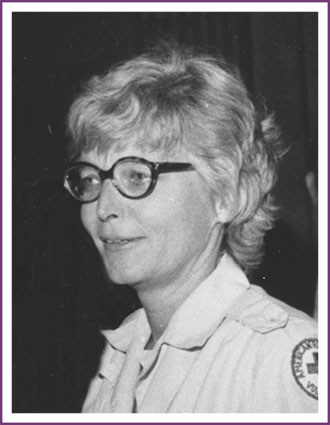ANN Mary (Cherrington) STEVENS

• Volunteering
• Role Model
Inducted: 2015
Deceased: 1978
Fairbanks
ANN Mary (Cherrington) STEVENS
In addition to being a loyal wife and loving mother, Ann Stevens was a community volunteer, hostess, businesswoman, public speaker, campaigner, and mentor. She was independent, versatile, and intelligent with a warm, friendly personality and a wonderful sense of humor.
Stevens was comfortable in any setting, whether as a hostess in Washington, D.C., working long hours on a political campaign or performing volunteer work. She could shift easily from a Georgetown cocktail party to an Eskimo whaling camp, bringing many worlds together with an easy conversation and a ready smile.
While her husband pursued his legal and political interests, Stevens was an active and dedicated volunteer with the Red Cross, Girl Scouts, League of Women Voters, and the Salvation Army. She volunteered to work with the Red Cross during the statewide effort to provide disaster relief following the Great Alaska Earthquake and the Fairbanks flood. Most notably, she extended her service with the Red Cross in Washington, D.C., as a member of the U.S. Senate Wives Red Cross Ladies.
Stevens was considered to be a close friend to many Alaskans and residents of the Washington, D.C, and area as well. She traveled frequently across Alaska and enjoyed the opportunity to educate and encourage Alaska’s citizens to become active in creating policies that would build Alaska’s future. She connected Alaskans to their state leaders and to their government. She served as a positive role model to Alaska women of all ages.
Her informal entertaining was a legend in the Capitol area. Stevens had a genuine concern for young Alaska women working in Washington, D.C., and served as a caring mentor and guide.
After her passing, the Alaska Red Cross named its building in Anchorage for Stevens, and the Ann Stevens Reading Room in the Anchorage Loussac Library is dedicated in her memory to honor her love of reading.
View Extended Bio